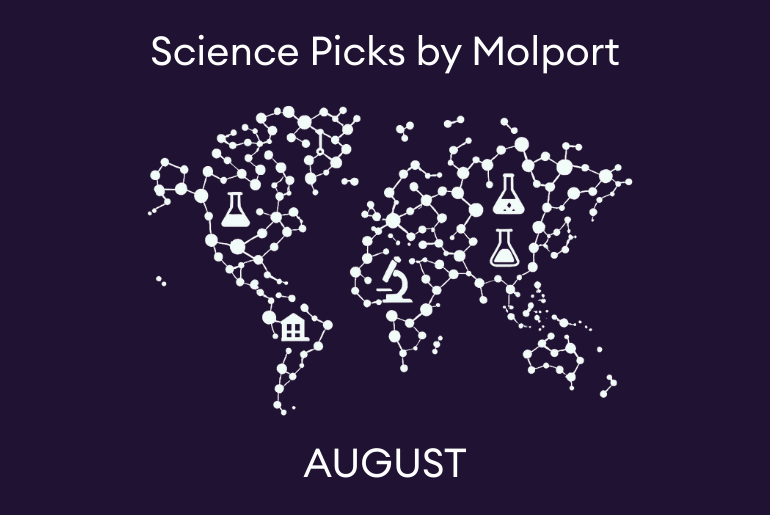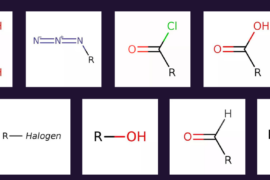August 25th
The Logic of Chemical Optimization
https://pubs.acs.org/doi/abs/10.1021/acs.jmedchem.5c00445
Abstract
During multiparameter chemical optimization, molecular capabilities increase as hits evolve into leads and development candidates. Like retrosynthetic analysis, where target molecules are transformed into structurally simplified starting materials, we introduce retro-optimization analysis, transforming sophisticated development candidates into less capable leads and hits. To retrospectively understand the logic of optimization in discovery campaigns, we enumerated a matched molecular pair network and compared the actual route of optimization taken to alternative theoretical routes of optimization. We noted differences in the network and properties of the lead molecule compared to those of alternatives. We identified substructures of the evolving ligand, named “optimizons,” and tracked their emphasis and discovery. While we initially defined and illustrated these methods for a single project, our expansion to three additional discovery projects and three external data sets proved consistent. We retrospectively define the logic of optimization at the project, molecular, and submolecular levels to prospectively guide current and future optimization campaigns.
August 18th
The European Federation for Medicinal Chemistry and Chemical Biology (EFMC) Best Practice Initiative: Hit to Lead
https://chemistry-europe.onlinelibrary.wiley.com/doi/epdf/10.1002/cmdc.202400931
The Hit to Lead (H2L) process is an integral part of contemporary drug discovery, encompassing the optimisation of validated Hit structures into Lead molecules. High quality leads build confidence, through activity and property profiles as well as preliminary biological data, which might include validating pharmacologic hypotheses along the way, indicating that further investment in the structure(s) and target would be worthwhile. Leads have line of sight to a development candidate and bring an understanding of what priorities Lead Optimisation should address. In this set of best practices, we detail the essential criteria that characterise a good lead, which include establishing SAR from analogues and assessing preliminary DMPK indicators, selectivity and early safety parameters. We highlight the importance of identifying liabilities of the lead series and demonstrating that each can be individually modulated whilst maintaining on target potency. We make the case for having physicochemical properties as critical optimisation parameters and how ligand efficiency metrics can enable this. Then we go over general tactics that can be used to convert hits into a lead series. These include essential steps that, when performed early, increase the chance of success such as deconstructive SAR, pharmacophore and bioactive conformation determination and scaffold optimisation. Finally, we suggest decision-making criteria to substantiate confidence in further investment or, as importantly, making a recommendation to cease further work on a series.
August 11th
Discovery of RP-1664: A First-in-Class Orally Bioavailable, Selective PLK4 Inhibitor
https://pubs.acs.org/doi/abs/10.1021/acs.jmedchem.5c00529
Abstract
LK4 is a cell cycle-regulated kinase important for the biogenesis of centrioles and is known to be synthetically lethal with TRIM37 gene amplification. Previous attempts to inhibit PLK4 have been hampered by selectivity or ADME liabilities. The known inhibitor Centrinone B, while potent and selective, is metabolically unstable and lacks oral bioavailability. Assisted by structure-based drug design (SBDD), dramatic improvements in potency, selectivity and ADME properties were made to this structure, resulting in the identification of RP-1664, a potent inhibitor of PLK4 with an excellent pharmacokinetic profile in preclinical species. Kinome profiling demonstrated exquisite selectivity over related kinases, including AURKA/B and PLK1. RP-1664 disrupts centriole biogenesis in cancer cells, modulates pharmacodynamic readouts of PLK4 activity in xenograft tumor tissues, and is efficacious in multiple TRIM37-amplified xenograft models. This first-in-class clinical candidate is currently being evaluated in Phase 1 clinical trials (NCT06232408) for treatment of advanced solid tumors.
August 4th
Harnessing Medicinal Chemical Intuition from Collective Intelligence
https://pubs.acs.org/doi/abs/10.1021/acs.jmedchem.4c03066
Abstract
Over the past decade, collective intelligence, i.e., the intelligence that emerges from collective efforts, has transformed complex problem-solving and decision-making. In drug discovery, decision-making often relies on medicinal chemistry intuition. The present study explores the application of collective intelligence in drug discovery, focusing on lead optimization. Ninety-two Sanofi researchers with diverse expertise participated anonymously in an exercise centered on ADMET-related questions. Their feedback was used to build a collective intelligence agent, which was compared to an artificial intelligence model. The study led to three major conclusions: first, collective intelligence improves decision-making in optimizing ADMET endpoints, compared to individual decisions. Second, collective intelligence outperforms artificial intelligence for all other endpoints but hERG inhibition. Finally, we observe complementarity between collective human and artificial intelligence. Overall, this research highlights the potential of collective intelligence in drug discovery and the importance of a synergistic approach combining human and artificial intelligence in project decision making.





